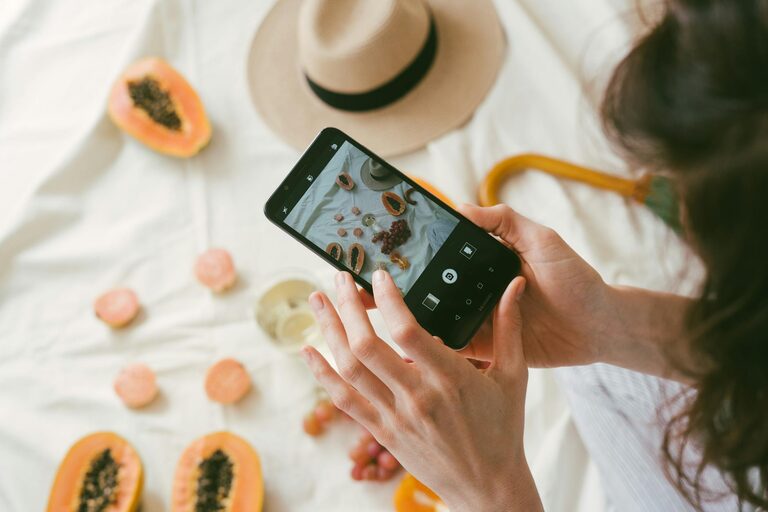Beginner Tips for Taking Better Phone Photos Every Time

Taking great photos with your phone is easier than you might think. Whether you want to preserve memories, share moments on social media, or simply enjoy photography as a hobby, your smartphone can be a powerful tool. In this post, we’ll share beginner-friendly tips to help you take better photos with your phone. Let’s dive in!
Understand Your Phone’s Camera Features
Explore the Camera App
Before snapping photos, spend some time exploring your phone’s camera app. Most modern smartphones come packed with useful features like:
– Grid lines: Helps with composition using the “rule of thirds.”
– HDR mode: Balances light and dark areas in your shots.
– Manual focus: Allows you to focus on specific areas.
– Timer: Great for group shots or steadying the camera.
– Filters: Add creative effects instantly.
Try out these features to see what works best for you.
Know Your Camera’s Limitations
Phones vary in camera quality and capabilities. Learn your phone’s strengths and limits:
– Does it have multiple lenses?
– What’s the maximum resolution?
– How does it handle low light?
Knowing this helps you make better decisions when shooting.
Focus on Composition
Use the Rule of Thirds
The rule of thirds divides your frame into nine equal sections with two vertical and two horizontal lines. Place key elements along these lines or at their intersections for balanced and engaging photos. Turn on grid lines in your camera settings to guide you.
Simplify Your Scene
Keep your photo clear and focused by minimizing distractions:
– Look for uncluttered backgrounds.
– Move around to find the best angle.
– Focus on one subject.
Less is often more in photography.
Get Close and Fill the Frame
Don’t be afraid to get closer to your subject. Filling the frame creates a more impactful image and captures details better. Use your feet rather than zooming digitally, as digital zoom can reduce quality.
Make the Most of Lighting
Use Natural Light
Natural light makes photos look vibrant and natural. Whenever possible, shoot outdoors or near windows. Early morning and late afternoon (the golden hours) offer soft and warm lighting that enhances photos.
Avoid Harsh Midday Sun
Bright midday sunlight can cause harsh shadows and blown-out highlights. If you must shoot during this time, find shaded areas or use objects to diffuse the light.
Experiment with Backlighting
Try placing your subject in front of a light source. Backlighting can create silhouettes or add a glowing effect when used creatively.
Stabilize Your Phone
Hold the Phone Steady
Blurry photos often result from shaky hands. Hold your phone with both hands, tuck your elbows close to your body, and stand still to improve stability.
Use a Timer or Remote
Using the timer or a remote shutter lets the phone stabilize after you tap the shutter button, reducing blur.
Consider a Tripod
For serious photography or low-light shots, a small phone tripod can be a great investment. It provides steady support and opens up creative possibilities.
Optimize Camera Settings
Adjust Focus and Exposure Manually
Tap your screen to set focus on your subject. Many phones also allow you to adjust the exposure (brightness) by sliding your finger up or down after focusing. This control helps avoid under or overexposed images.
Use HDR Mode
High Dynamic Range (HDR) mode helps capture more details in both dark and bright areas. It combines multiple shots into one balanced photo, making it especially useful for landscapes.
Shoot in Landscape Mode for Wide Shots
Hold your phone horizontally for wider shots. Landscape orientation gives a natural view and works well for most scenes.
Edit Your Photos
Use Built-In Editing Tools
Most smartphones offer basic editing tools such as cropping, adjusting brightness, contrast, and saturation. Minor edits can enhance your photo without making it look artificial.
Try Free Photo Apps
Explore free apps like Snapseed, VSCO, or Lightroom Mobile for more advanced yet user-friendly editing options.
Avoid Over-Editing
Editing should enhance your photo, not overpower it. Keep changes subtle to maintain a natural look.
Practice Regularly and Experiment
Try Different Perspectives
Don’t just shoot from eye level. Try low angles, high angles, or unconventional viewpoints to add interest.
Experiment with Subjects
Practice taking photos of people, nature, food, or architecture to discover what excites you most.
Review and Learn
Look at your photos critically to understand what works well and what doesn’t. Over time, your skills will improve.
—
Taking better photos with your phone is all about being mindful of light, composition, and technique. With these beginner tips, you’re well on your way to creating beautiful images that capture your world. Happy shooting!




